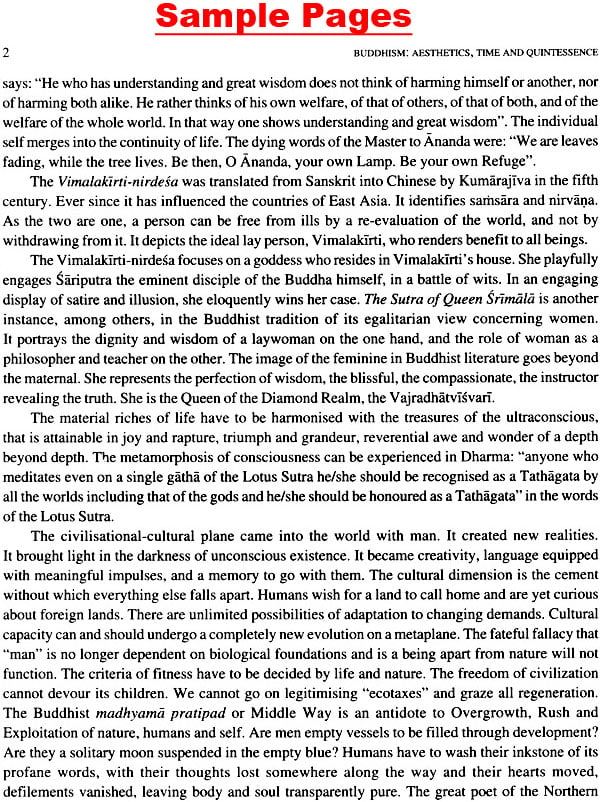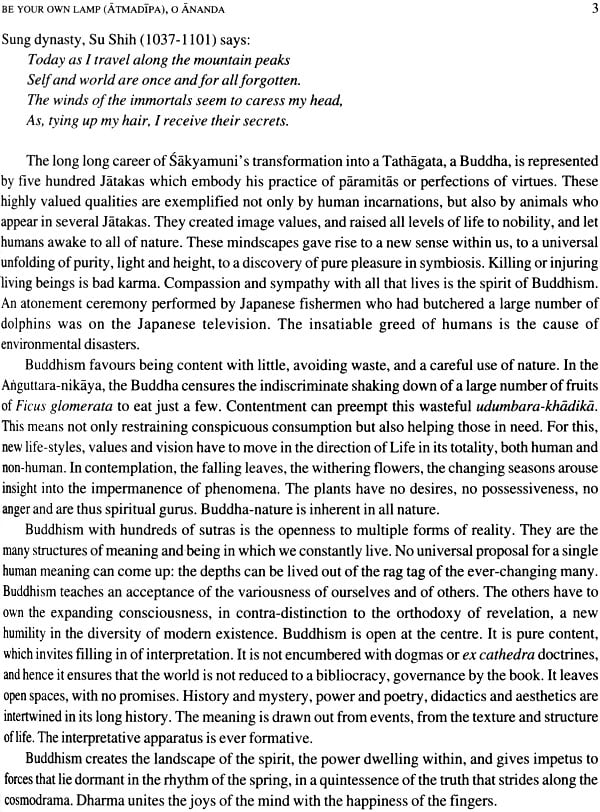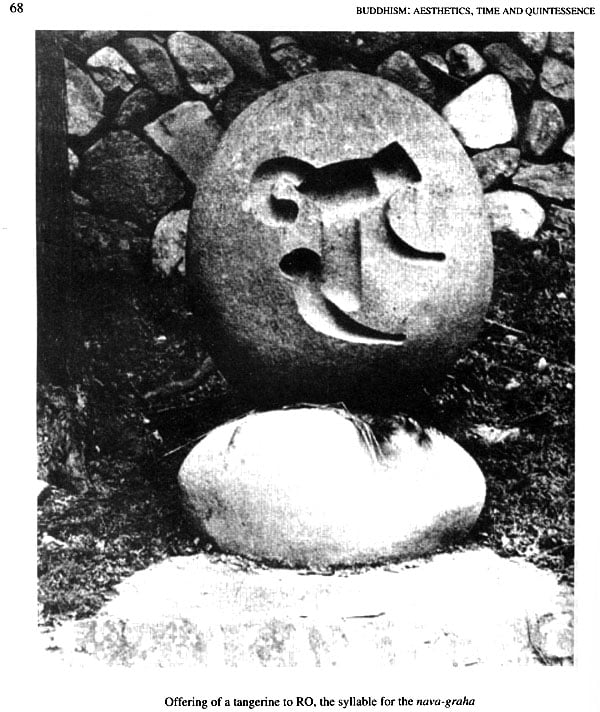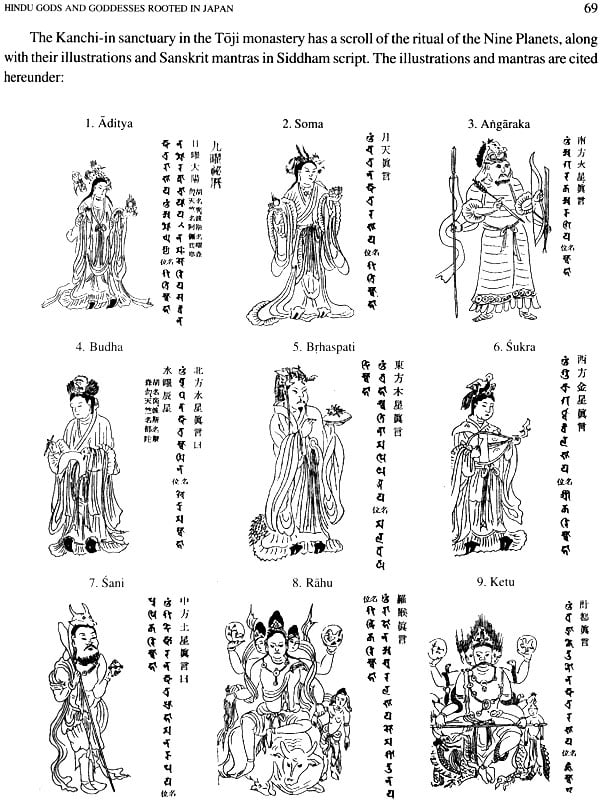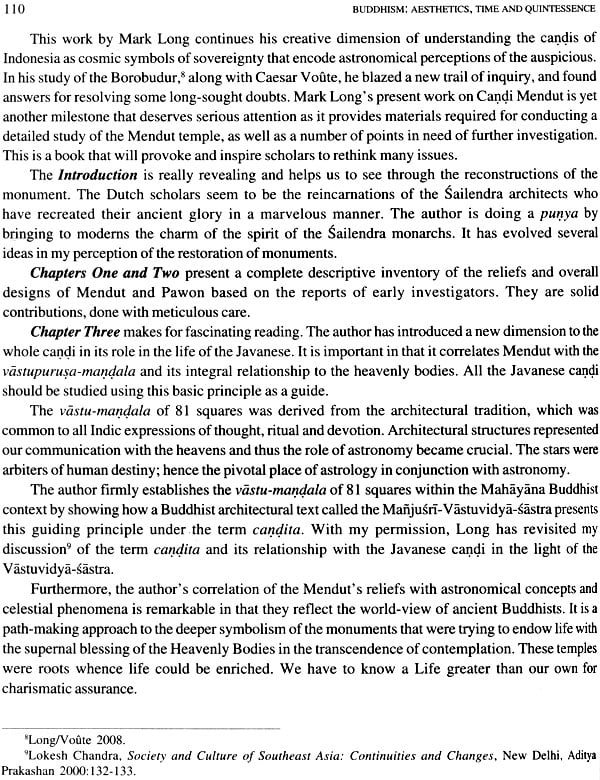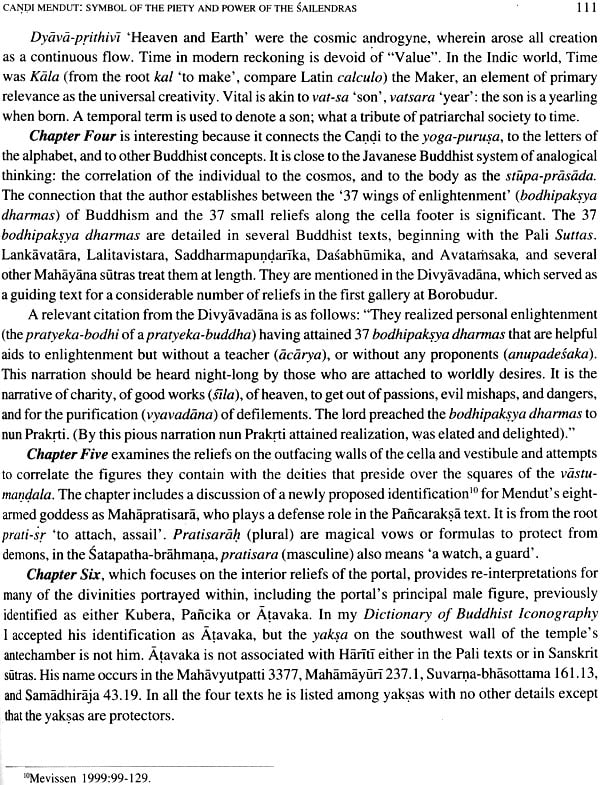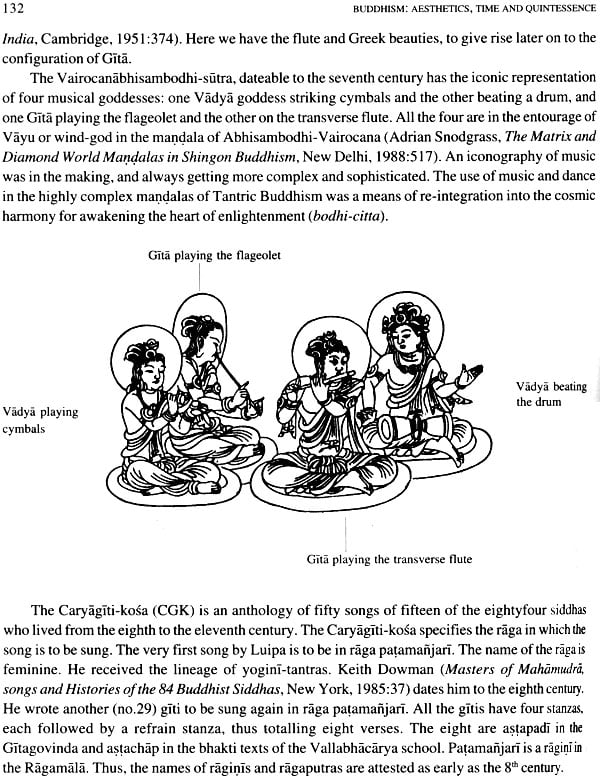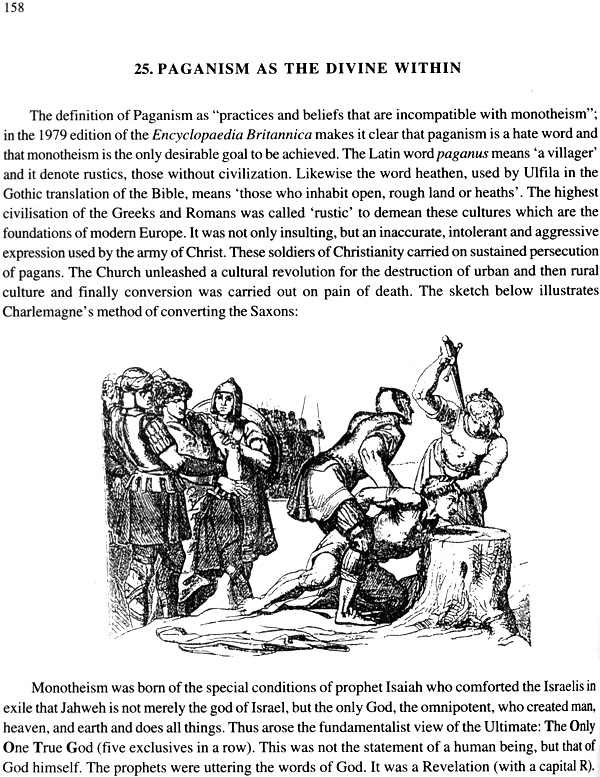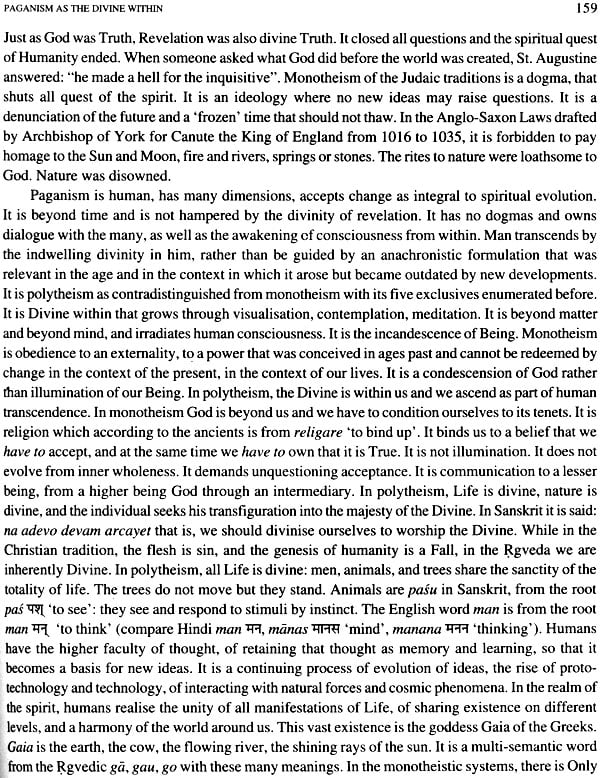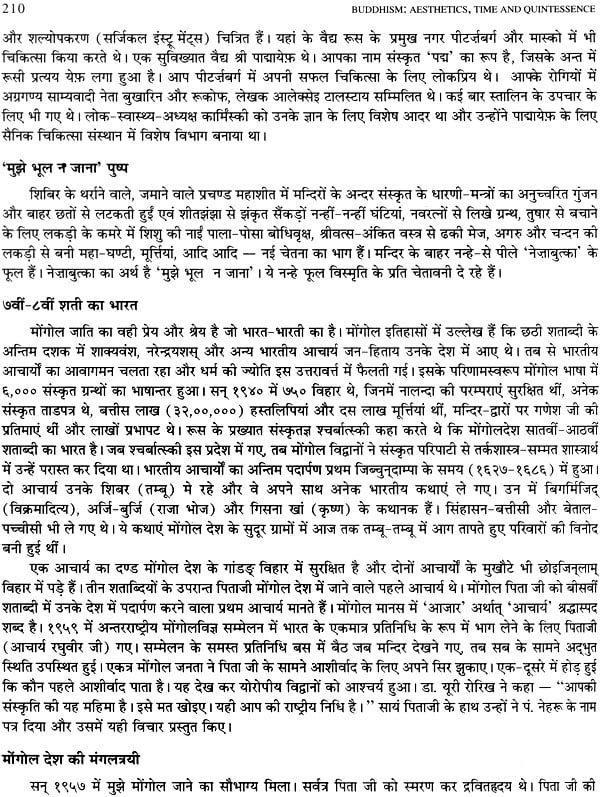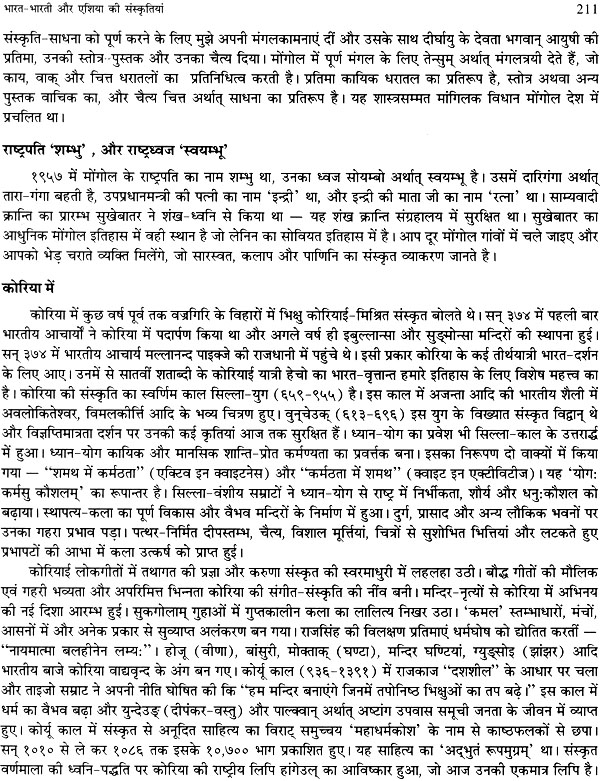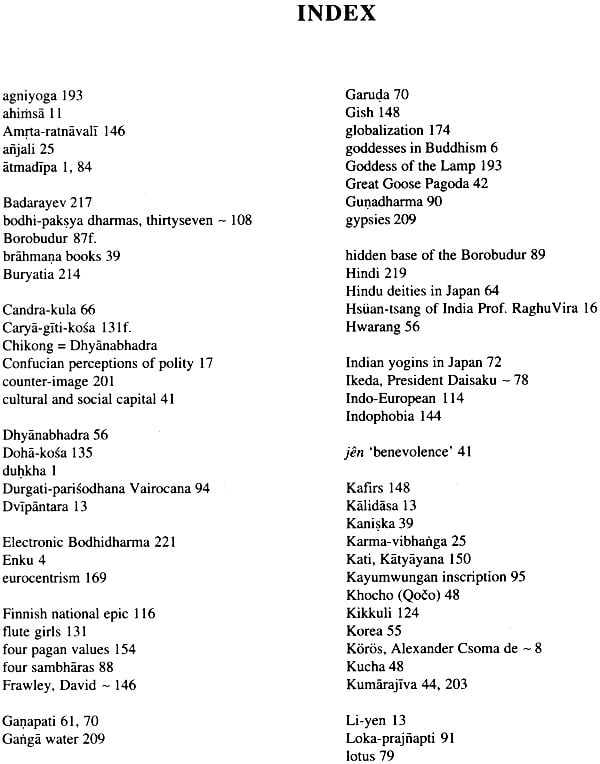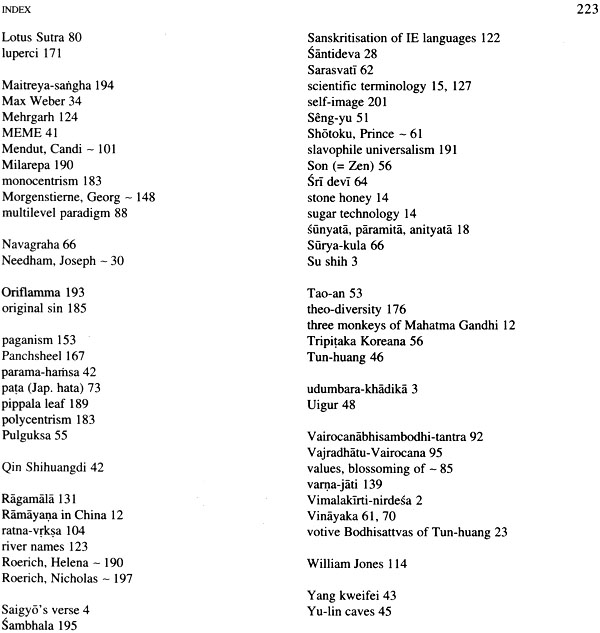
Buddhism: Aesthetics, Time and Quintessence
Book Specification
| Item Code: | NAM576 |
| Author: | Lokesh Chandra |
| Publisher: | International Academy of Indian Culture and Aditya Prakashan |
| Language: | English and Hindi |
| Edition: | 2010 |
| ISBN: | 9788177421019 |
| Pages: | 232 (17 B/W Illustrations) |
| Cover: | Hardcover |
| Other Details | 11.0 inch X 9.0 inch |
| Weight | 910 gm |
Book Description
This volume contains the minor writings of Prof. Lokesh Chandra on Buddhism, the role of women therein, and the opening up of the vast Buddhist literature in the Tibetan Canon. He goes on to a personal narrative of his sinological studies, followed by identification of the votive banners of Tun-huang and the Karma-vibhanga. Culture and civilization as interactive diversities in the Sino-Indian context, the lives of early Buddhist masters in the catalogue of Seng-yu (445-518), and the role of Buddhism in creating the state of Korea and her alphabet. Hindu gods and goddesses in Japan, and the role of the Lotus Sutra in contemporary Japan. A new consideration of the conceptual architectonics of the Borobudur, and the reliefs of the Candi Mendut embodying the polycentric approach of Buddhism. Indo-European as a construct of imperialism, scientific terminology for Indian languages, iconics of melodies (raga and rupa), the varna-jati system, the Kafirs of Afghanistan, paganism, techno sphere and psycho sphere, neo-classical art as "leaves of language and flowers of the brush", counter-image versus self- image: a vast range of language, art, iconography, and the meta-space of culture in its widest sense are covered in this work.
Prof. Lokesh Chandra is a renowned scholar of Tibetan, Mongolian and Sino-Japanese Buddhism. He has to his credit over 600 works and text editions. Among them are classics like his Tibetan-Sanskrit Dictionary, Materials for a History of Tibetan Literature, Buddhist Iconography of Tibet, and the Dictionary of Buddhist Iconography in 15 volumes. Prof. Lokesh Chandra was nominated by the President of the Republic of India to the Parliament in 1974-80 and again in 1980-86. He has been a Vice-President of the Indian Council for Cultural Relations, and Chairman of the Indian Council of Historical Research. Presently he is Director, International Academy of Indian Culture.
This volume presents interstices of my forays into classical times for the last several years, with auspicious moments in living sancta, rambles in ancient monuments in the infinite of the blue sky of Buryatia, in the beauty of the eyes and of the mind in the Confucian-cum-Buddhist climes of East Asia, and in the monsoons drenching the Golden Isles of South-East Asia and littering their structures with stone cancer. The magical words of texts, the solidity of monuments, the void of time and the enveloping plenitude of vision are here to illuminate tiny unknowns of history. Ideas and order, forms and proportions, whirling images and fleeting time that have culminated in scripta minora are included herein.
The volume commences with the core of Buddhist teaching “Be your own lamp, 0 Ananda” the final message of Lord Buddha to his dear companion and devoted disciple Ananda. It goes on to the role of goddesses in Buddhism, so definitively defined by the Canda-maharosana-tantra: “women are the supreme fires of transformation”. The role of the Hungarian Korosi Csoma Sandor who opened up the vast riches of Tibetan Buddhism in his catalogue raisonne of the Kanjur is discussed.
China. A personal narrative on the Buddhist values in China as literature, art, philosophy, theatre, geography, as I came to appreciate and valorize them in the tradition of my father Prof. Raghu Vira. Tun-huang, that Perfection of the Finite, and the vision of the Infinite, a longing of proportion and propriety, the profound beauty of Form or rupadhatu, has been discussed. The votive bodhisattvas and their contextualisation in the Karmavibhanga (KV) were depicted at Tun-huang on votive banners (pataka in the KV). They have been identified as such for the first time. It is followed by a review of the life of Joseph Needham, whose history of sciences in China is a monumental work. His discussions on the contacts of India and China in the natural sciences are scattered over the twenty five large published volumes of this ongoing project.
Culture and civilization are interactive diversities. They have been considered in the context of India, China and Russia as a symbiosis of the economic, social and cultural capital in the terminology of Pierre Bourdieu.
A journey across the mindscape of Buddhism in China is an assessment of how a young Indian views the millenarian blossoming of the two ancient lands of culture. What a wonderful way of shared values and beauty!
Seng-yu’s (AD 445-518) catalogue is the oldest extant work that contains the lives of early Buddhist masters. He is the first ‘historian’ of Chinese Buddhism whose works are available to us.
Korea. A short note on the role of Buddhism in creating the state of Korea, giving an alphabet based on a phonetic system like that of Sanskrit, and all the splendor of her religion, artistic and philosophic riches.
Japan. Hindu gods and goddesses rooted in Japan go back to the Suvarna-prabhasa-sutra and the Mahavairocana-sutra: Nandikesvara (Jap. Kangiten) is still the ‘God of Joy’ or Love. Miracles follow sincere worship. The second presentation is a short overview of the interflow of culture between India and Japan. The third contribution is on the Lotus Sutra; its regnant role in contemporary Japan under the inspiring leadership of the Great Bodhisattva Daisaku Ikeda.
Indonesia. The conceptual framework of the Borobudur is based on the conflation of several texts. The system of Four Sambharas in the Lalitavistara provides a key for a fresh consideration of this great architectonic mandala. The iconography of the hidden base has been discussed as the convergence of divergent texts. Its legendary architect Gunadharma has followed the harmonization of several Buddhist texts, as also attested by the reliefs of Sudhana and Manohara, The second is a presentation of the system of reliefs of the Candi Mendut which represents a time when the Sailendras made Indonesia a superpower in the region.
Indo-European linguistics. The motivations for the creation of the Ursprache of Indo-European was based on anachronistic comparative studies, under compulsions of the eurocentric imperialisms of the 19th century. The writeup raises new issues, points out earlier conflicting hypotheses, and invites a new look on both the roots and the tops of a linguistic culture that spans several millenia and an incredibly vast geographic area.
Scientific terminology for Indian languages gives a short sketch of the historic contributions of my father Prof. Raghu Vira to enrich India’s languages with new terms for modem concepts in the humanistic, social and natural sciences.
Iconics of melodies. A discussion of the ragas and raginis in the Carya-giti-kosa and their evolution into the full-fledged system of the Ragamalas, as a foreword to the forth coming volume on the paintings of the Ragamala by Prof. Nirmala Sharma. Here devotion, poesy, song and form commingle in the art of great masters.
Yarna-jati system. The imperialism of the 19th century created brilliant misunderstandings in overblown interpretations of allusions in classical texts. This paper tries to place the much maligned “caste” system in its correct socio-historic and eugenic contexts.
The Kafirs of Afghanistan is a peep into these brave people of the Hindu Kush mountains who were converted to Islam from 1895 onwards, and named Nuristan. They were Indo-European, and had a pantheon similar to the Hindu, Iranian and Greek. Octavio Paz (In Light of India, London, p.21 n.) says: “they used chairs, which were generally unknown in Asian cultures”. Prof. Jettmar has pointed out that their languages are the most archaic of all modem Indian languages, and retain Vedic words and deities. Nuristan was a precursor to the destruction of the colossi of Bamiyan.
Paganism. Two articles on paganism as a metagrid of the future when life, land, nature and unity in diversity will be the new vision of a biosphere, in which these four pagan values will lead to theodiversity instead of monotheistic fundamentalism.
Culture and civilization. Cultural values as the underpinning of a technosphere of contemporary civilization, panchsheel as the foundation of a humane international order, globalization as the new avatara of imperialism, harmony through the polycentrism of theodiversity, dialogue or trivialization are new projections of the universality of culture/civilization rather than a universal culture/civilization. The new world has to bump into her dreams from ecological peace, social peace and spiritual peace: as every Vedic prayer ends with the triune santih santih santih.
Neo Classical Art. The next two chapters deal with the artistic meta-space of the artists Helena Roerich and her husband Nicholas Roerich, who celebrate roots and renaissance, mysticism and the dance of compassion. Sages of rupa and sabda they envision the post-modem mind as “leaves of language and flowers of the brush”
This is the first time that I present perceptions on some of the valorizations of the future where the self-image and counter-image can give rise to a multivalent civilization.
The volume ends with five presentations in Hindi on culture in general, India’s contributions to Asian culture, Buddhism in Buryatia (Transbaikalian Siberia), and the development of Hindi for scientific, technological and other modem needs.
CONTENTS
| Preface | vii | |
| 1 | Be your own lamp, 0 Ananda | 1 |
| 2 | Goddesses in Buddhism | 6 |
| 3 | Alexander Csoma de Koros and Buddhology | 8 |
| 4 | Buddhist values and Confucian mindset of China | 10 |
| 5 | The Votive Bodhisattvas of Tun-huang | 23 |
| 6 | Joseph Needham’s History of Sciences in China | 30 |
| 7 | Interactive diversities: culture and civilization | 34 |
| 8 | Journey across the mindscape of Buddhism in China | 42 |
| 9 | Lives of early Buddhist masters in the catalogue of Seng-yu | 51 |
| 10 | Morning calm and the pensive beyond | 55 |
| 11 | भारत और कोरिया | 58 |
| 12 | Hindu gods and goddesses rooted in Japan | 60 |
| 13 | India and Japan: interflow of culture | 72 |
| 14 | The rising sun, the blooming lotus, and the enlightening Sensei | 78 |
| 15 | Blossoming of values | 87 |
| 16 | The hidden base in the cosmosophy of the Borobudur | 87 |
| 17 | Candi Mendut: symbol of the piety and power of the Sailendras | 101 |
| 18 | Indo-European: a construct of imperialism | 114 |
| 19 | Scientific terminology for Indian languages | 127 |
| 20 | Musical notes in the Carya-giti-kosa | 131 |
| 21 | Varna-jati system | 139 |
| 22 | Saiva and Sakta Vision | 146 |
| 23 | The Kafirs of Afghanistan | 148 |
| 24 | Paganism as a metagrid of the future | 153 |
| 25 | Paganism as the divine within | 158 |
| 26 | Culture and civilization | 162 |
| 27 | Panchsheel: A humane international order | 167 |
| 28 | Globalization to eurocracy | 171 |
| 29 | Harmony through theodiversity | 176 |
| 30 | Monocentrism versus polycentrism | 183 |
| 31 | Helena Roerich: Roots and Renaissance | 190 |
| 32 | Mysticism and the art of Nicholas Roerich | 197 |
| 33 | Self-image and counter-image | 201 |
| 34 | संस्कृति, निर्मिति और व्यापकता | 205 |
| 35 | मानव संस्कृति को भारत का अवदान | 207 |
| 36 | भारत-भारती और एशिया की संस्कृतियाँ | 209 |
| 37 | संस्कार एवं संस्कृति - बुर्यात (साइबेरिया) के मनोगगन में | 214 |
| 38 | संस्कार और स्वभूमि की सरिता - हिंदी | 219 |
| Index | 222 |
